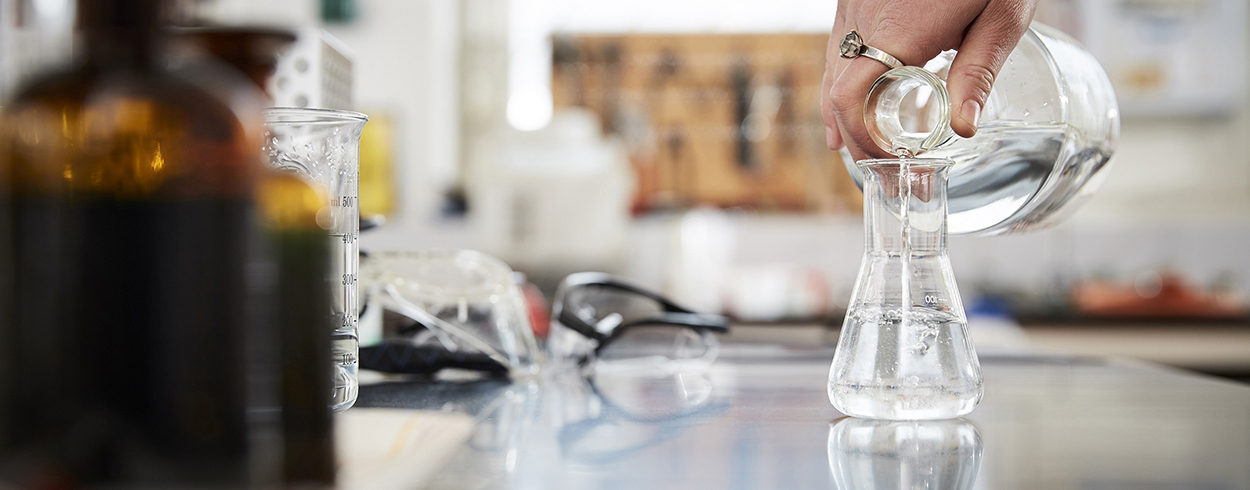
Alcohol – what is it?
The alcohol contained in alcoholic beverages is called ethyl alcohol, aka ethanol. It is a clear, colourless and highly flammable liquid with a pungent taste. Alcohol impairs your brain functions, that is, it intoxicates you.
What is alcohol?
The ethanol molecule consists of carbon, hydrogen and oxygen. Its chemical formula is C2H5OH. The boiling point of alcohol is about +78°C and the freezing point about -114°C. Alcohol is lighter than water. One litre of alcohol weighs 790 grams, while one litre of water weighs 1,000 grams (that is, 1 kilogram).
Most of the energy in alcoholic beverages comes from the alcohol. Alcohol contains almost as many calories as fat: one gram of alcohol has 7 kcal of energy. Read more about the calorific content of alcohol.
Finland’s Alcohol Act defines an alcoholic beverage as a substance containing alcohol that is intended for drinking and contains a maximum of 80 per cent ethanol per volume. Alcoholic beverages are categorised according to their alcohol content. Mild alcoholic beverages contain a maximum of 22% alcohol per volume. They include beverages such as cider, long drinks, beer and wine. Strong alcoholic beverages are those with an alcohol content of more than 22%. They include whisky, rum and cognac.
Ethanol can also be used for other purposes, for example, as a disinfectant or fuel. A substance intended for industrial use will usually contain denatured ethanol. Denatured means the addition of other substances that will hinder the consumption of the product as a beverage.
What effects does alcohol have?
Alcohol and drugs are referred to by the common name of ‘intoxicants’. Like some other intoxicants, alcohol impairs your brain function. The amount of alcohol in your blood will peak about 30–60 minutes after you have consumed an alcoholic drink. The alcohol concentration in your brain is the same as that in your blood.
Most alcohol is absorbed into the body through the duodenum (the first portion of the small intestine). If you drink alcohol with food, you will feel the effects more slowly and the alcohol will have less of an effect on you.
Small servings of alcohol (when your blood alcohol content remains below 0.5 per mille) may invigorate you, reduce tension and lower your inhibitions. Larger servings (when your blood alcohol content reaches 1–2 per mille) will noticeably impair your mental and physical ability to function. Read more about the effects of intoxication.
As your blood alcohol content falls, you will start to feel the symptoms of a hangover, such as a headache, tiredness and nausea. Read more about hangovers.
Alcohol risk limits are defined in terms of daily or weekly servings of alcohol. A moderate risk level is 14 servings per week for men and 7 for women. Read more about alcohol risk limits.
The risks of alcohol use
The use of alcohol, like that of other intoxicants, has its risks. As alcohol consumption increases, so do the harmful effects.
The acute risks associated with alcohol consumption include an increased danger of accidents and poisoning caused by excessive intoxication.
In addition to alcohol dependency (aka alcoholism), alcohol use can also cause many organ diseases. Alcohol does most damage to the liver and brain.
Read more about the harmful effects of alcohol and alcohol-related illnesses.
Article sources:
Addictionlink
Finlex
Valvira
Article picture: Folio Images
A beverage’s alcohol content is usually indicated as a percentage of alcohol by volume (% alc/vol). This figure will indicate how many decilitres of ethanol are contained in one litre of the beverage in question. For example, if a bottle of wine (0.75 litres) is marked as 11% alcohol by volume, the entire bottle contains 0.75 l x 0.11 = 0.083 litres (0.83 decilitres) of alcohol.
 Chat
Chat


